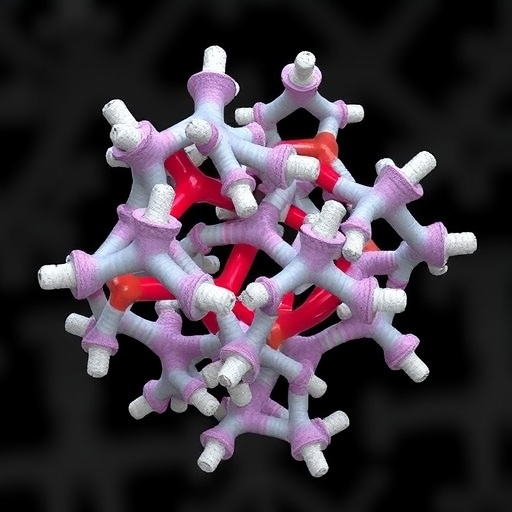
Credit: Kim Ratliff, Production Coordinator, Augusta University
A “danger molecule” is higher in the blood of younger black adults than whites, females than males and increases with weight and age, researchers report in the first large, longitudinal study associating circulating HMGB1 levels with obesity, inflammation promoters and early indicators of cardiovascular risk in humans.
Higher HMGB1 levels were consistently associated with higher blood levels of the established inflammation molecule C-reactive protein and stiffer arteries, an often-early indicator of vascular damage, across all groups, Medical College of Georgia researchers report in the journal Arteriosclerosis, Thrombosis and Vascular Biology.
The findings point to the potential of circulating HMGB1 levels as a sound biomarker of cardiovascular risk as well as the use of HMGB1 antibodies or inhibitors to prevent or treat chronic inflammation, obesity and cardiovascular disease, corresponding author Dr. Yanbin Dong, geneticist and cardiologist and his colleagues write.
“We think it’s an initiator for the inflammation cascade, which should make its blood levels really good information for patients and physicians,” says Dong, a faculty member in the MCG Department of Medicine and its Georgia Prevention Institute.
HMGB1, or High Mobility Group Box-1, is one of the body’s so called “danger molecules.”
These damage-associated molecular patterns, or DAMPs, should reside inside the nucleus or cytoplasm of your cells, where they may have a positive role. Inside cells HMGB1, for example, can help manage the architecture of our chromosomes.
But like other DAMPs, when HMGB1 gets released by injured or otherwise stressed cells — including as a result of significant mental stress — it’s viewed by the body like a virus might be, activating an immune response that can go viral and producing an unhealthy, chronic state of inflammation. In fact, this excessive immune response is what happens with the lung damage and resulting cytokine storm in COVID-19, says Dr. Li Chen, postdoctoral fellow with Dong and the study’s first author.
“HMGB1 is like a biomarker of the danger and stress you face,” Chen says.
In the largest human study of HMGB1, they looked at 489 individuals an average age of about 25 when they had their first of at least four blood samples drawn over the course of 8.5 years at the Georgia Prevention Institute. They are part of the longitudinal Georgia Stress and Heart Study seeking to learn more about the development of cardiovascular risks, and had enrolled as healthy 5 to 16 year olds.
The researchers found obesity most closely associated with high levels of HMGB1 over time, Dong says. Animal studies, including their own, have shown that just 12 weeks of a high-fat diet increases blood levels of HMGB1. Levels of the danger molecule have been shown to be high in individuals with a high waist-hip ratio, which means their waist and hip are closer to the same size so the overall shape is characterized as apple-shaped. Pear-shaped, with less fat around the middle, is generally considered a healthier distribution of fat. It’s also already associated with a higher blood pressure and higher levels of the small cytokine interleukin 6, secreted by immune cells in response to injury or infection, and Turkey researchers have found higher HMGB1 levels in heart patients compared to healthy individuals
It’s known that fat cells themselves are a sort of double DAMP hazard because they both secrete the danger molecules when they are alive and as they die; and individuals with obesity tend to have more fat cells. HMGB1 released from fat cells under either circumstance activates nearby immune cells, which also secrete HMGB1, which recruits even more immune cells, creating a vicious cycle of chronic inflammation that plays an early and key role in hypertension and cardiovascular disease, Dong says.
Blood levels of HMGB1 started out higher in blacks and females in the study and stayed higher throughout the course of the 8.5 years, the researchers say. Blacks tend to have more severe cardiovascular and cerebrovascular problems starting at a younger age than whites, and an early, heightened inflammatory response is likely a factor, Dong says, so their findings were consistent with those trends. But the female findings were surprising.
“Females tend to be healthier than males by a lot of markers,” Chen says. “But this one is in the opposite direction.” At least before menopause, females tend to have fewer cardiovascular problems than males. The researchers suspect that generally higher percentages of body fat in females might help explain the higher HMGB1 levels, but that younger females may have unique cardiovascular protections, like estrogen.
Increases in HMGB1 across the board were accompanied by increases in proinflammatory factors like C-reactive protein, interleukin 6 and tumor necrosis factor as well as stiffer arteries and generally higher blood pressure. There can be bad synergy between those factors, for example, interleukin-6 prompts the liver to make C-reactive protein, which is an established inflammatory factor that some physicians already look at in the blood, along with other known risks like high cholesterol and lipid levels. The researchers found higher C-reactive protein consistently associated with increasing age, being female and obese. There also were strong associations with high levels of C-reactive protein and arterial stiffness.
The increase that came with aging also was not a surprise, they say. “As you age, you have more cell death, generally speaking,” Dong says.
“This is the first study to demonstrate the age, sex and race differences in circulating HMGB1,” they write. “The increasing circulating concentrations of HMGB1 with age suggest a potential role of HMGB1 in the pathogenesis of chronic, low-grade inflammation, obesity and subclinical (early) (cardiovascular disease) risk.”
HMGB1 is one of the most studied DAMPs, and it’s known to have a lot of roles in functions like inflammation, cell differentiation and tumor cell migration. But its role in chronic, low-grade inflammation, which plays a major role in many disease states from heart disease to stroke to cancer, has not been well studied in humans.
Dong and Chen’s future work also likely includes pursuing HMGB1 as a potential biomarker for blood vessel disease like heart attack and stroke, as well as a potential prognostic indicator for how these diseases will progress and how patients are responding to treatment.
###
The research was supported by the National Institutes of Health.
Read the full study here.
Media Contact
Toni Baker
[email protected]
Related Journal Article
http://dx.





